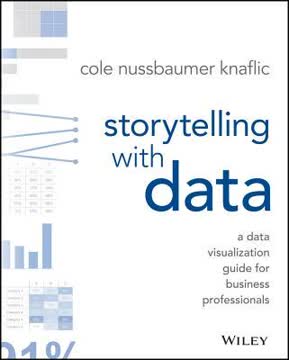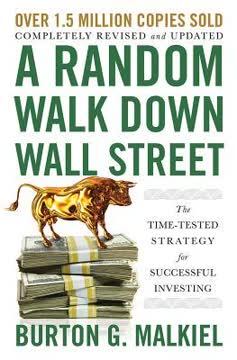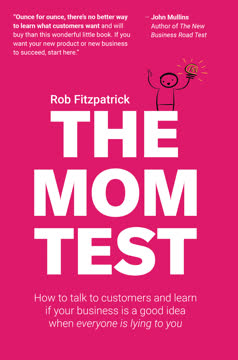つの重要なポイント
1. データ駆動型マーケティングはマーケティングの格差を埋める鍵
「キャンペーンの一部がうまくいかないからといって、全くやらないというわけではない。マーケティングの方法を再評価し、効果を高める機会を探す必要がある。」
マーケティングの格差が存在する。 研究によれば、データ駆動型マーケティングを採用する組織とそうでない組織の間には明確な格差がある。データと指標を活用するリーダーは、財務業績、市場シェア、ブランドエクイティの面で一貫して遅れを取る組織を上回っている。
小さく始めて、速く拡大する。 この格差を埋めるために、組織は以下のことを行うべきである:
- 簡単な指標とExcel分析から始める
- 価値の80%を提供する20%のデータを収集することに焦点を当てる
- 迅速な成果を示して経営陣の支持を得る
- より高度な分析のためのインフラを段階的に構築する
文化的な変革が必要。 データ駆動型マーケティングの実施には、組織の抵抗を克服することがしばしば必要である。主な戦略には以下が含まれる:
- 結果に基づくインセンティブの整合
- 新しいツールとアプローチに関するトレーニングの提供
- リーダーシップによる一貫したメッセージングと模範を通じた「データ駆動型マーケティング文化」の創造
2. 効果的なマーケティング測定の基盤を形成する必須指標
「マーケティングを測定できれば、それを制御し、パフォーマンスを劇的に向上させることができる。」
15の必須指標。 本書では、さまざまなマーケティング活動にわたる15の重要な指標を特定している:
- ブランド認知度
- 試乗
- 解約率
- 顧客満足度(CSAT)
- テイクレート
- 利益
- 正味現在価値(NPV)
- 内部収益率(IRR)
- 回収期間
- 顧客生涯価値(CLTV)
- クリック単価(CPC)
- トランザクション転換率(TCR)
- 広告費用対効果(ROA)
- 離脱率
- 口コミ(WOM)
バランススコアカードアプローチ。 効果的な測定には、複数の次元にわたるバランスの取れた視点が必要である:
- 戦略的(将来志向):ブランド認知度、CSAT、試乗
- 戦術的(過去志向):財務指標、解約率
- 運用的:テイクレート、キャンペーン効率
測定のための設計。 効果的な測定を実施するためには:
- キャンペーン開始前に明確な目標と主要業績評価指標(KPI)を定義する
- ビジネス目標に一致するスコアカードを作成する
- キャンペーンライフサイクル全体で定期的にデータを収集する
3. 財務指標はマーケティング活動の50%以上を定量化する
「財務はビジネスの言語であり、この言語を学ぶマーケターは取締役会で尊敬を得る。」
需要創出に適用可能。 財務指標は特に以下に有用である:
- 短期プロモーションキャンペーン
- 新製品の発売
- 測定可能なリピート購入を伴うロイヤルティマーケティング
必須の財務指標:
- 利益:収益 - コスト
- 正味現在価値(NPV):割引された将来のキャッシュフロー
- 内部収益率(IRR):投資が損益分岐点に達する率
- 回収期間:投資を回収するのに必要な時間
ROMIフレームワーク。 マーケティング投資のリターンを計算するために:
- ベースケース(通常のビジネス)を定義する
- 新しいマーケティングイニシアチブからの上昇を見積もる
- 増分キャッシュフローを計算する
- 不確実性を考慮した感度分析を実施する
4. 顧客生涯価値(CLTV)は価値ベースのマーケティングに不可欠
「すべての顧客が平等ではない。」
CLTVの計算。 顧客生涯価値は、以下を考慮した顧客の将来の利益可能性の正味現在価値を表す:
- 獲得コスト
- 予測マージン
- 維持確率
- 割引率
価値ベースの戦略。 CLTVはより効果的な:
- 顧客セグメンテーション
- 資源配分
- ターゲットマーケティングキャンペーン
- 高価値顧客の維持努力
短期と長期のバランス。 効果的な価値ベースのマーケティングには:
- 高い潜在顧客の特定と育成
- 低価値または負の価値の顧客のコスト管理
- 中価値顧客を高価値ステータスに移行させる戦略の開発
5. インターネットマーケティング指標はデジタル時代のパフォーマンスを駆動する
「インターネットマーケティングは西部開拓時代:インターネットはマーケティングの新しいフロンティアであり、まだ完全には解明されていない。」
検索エンジンマーケティング(SEM)の最適化。 主要指標には以下が含まれる:
- クリック単価(CPC)
- クリック率(CTR)
- トランザクション転換率(TCR)
- 広告費用対効果(ROA)
クリックを超えて。 効果的なデジタルマーケティングは以下も考慮する:
- 離脱率:すぐに離脱する訪問者の割合
- アトリビューションモデリング:顧客の全体的な旅の理解
- 口コミ(WOM):ソーシャルメディアのエンゲージメントとシェアの追跡
新興トレンド。 以下で先を行く:
- ソーシャルメディアでのハイパータゲティング
- リアルタイム入札と最適化
- オンラインとオフラインのマーケティングデータの統合
6. アジャイルマーケティングは迅速な適応とパフォーマンス向上を可能にする
「失敗するなら、早く失敗しろ。」
近時データ収集。 キャンペーン期間より短いタイムスケールでパフォーマンスデータを収集する:
- 10ヶ月のキャンペーンの場合、少なくとも月次でデータを収集する
- 10週間のキャンペーンの場合、週次でデータを収集する
測定のための設計。 キャンペーンを開始する前に:
- 明確な成功基準と指標を定義する
- データ収集方法を計画する
- 潜在的なコース修正のための意思決定ポイントを設定する
インサイトに基づいて行動する。 以下の準備をする:
- キャンペーンの成功要素を強化する
- パフォーマンスが低い側面を修正する
- 失敗しているキャンペーンを早期に終了し、リソースを再配分する
7. 分析とイベント駆動型マーケティングはターゲットを絞ったタイムリーなオファーを提供する
「わあ、その製品はまさに私が必要としているものだ!」
3つの必須アプローチ:
- 傾向モデリング:購入の可能性を予測する
- マーケットバスケット分析:製品の親和性を特定する
- 決定木:複数の変数に基づいて顧客をセグメント化する
イベント駆動型マーケティング。 分析を活用して:
- トリガーイベント(例:ライフチェンジ、製品使用のマイルストーン)を特定する
- 関連性の高いタイムリーなオファーを開発する
- 顧客の行動に対するマーケティング応答を自動化する
測定可能な影響。 高度な分析を実施する企業は以下を報告している:
- 応答率の向上(しばしば3〜5倍の改善)
- 顧客満足度の向上
- 高価値顧客の維持の改善
8. インフラ投資はデータ駆動型マーケティング戦略と一致させる必要がある
「データ駆動型マーケティング技術は技術者に任せるには重要すぎる。」
スケールの考慮事項。 インフラのニーズは以下に依存する:
- 顧客基盤の規模
- ビジネス要件の複雑さ
- 分析速度の希望(例:リアルタイム対バッチ処理)
段階的アプローチ。 小さく始めてスケールする:
- コア指標のためのExcel分析から始める
- 中央集権的なマーケティングデータベースを実装する
- 企業データウェアハウス(EDW)機能を段階的に構築する
- 必要に応じて高度な分析とリアルタイム意思決定を追加する
一般的な落とし穴を避ける:
- 経営陣の支援とビジネス目標との整合を確保する
- データ品質の問題に早期に対処する
- 初めからスケーラビリティを計画する
- 即時の成果と長期的なアーキテクチャのニーズのバランスを取る
9. コアマーケティングプロセスはリーダーと遅れを取る者を区別する
「マーケティングの良し悪しの違いは微妙ではない。」
4つの必須能力:
- 選択:キャンペーン資金調達と整合のための文書化されたプロセス
- ポートフォリオビュー:キャンペーンの相乗効果に対する全体的なアプローチ
- 監視:一貫した測定と評価
- 適応学習:将来のキャンペーンにインサイトを適用する
技術の活用。 技術だけではパフォーマンスを駆動しないが、以下のコアプロセスをサポートする:
- 中央集権的なデータ管理
- 分析と報告ツール
- マーケティングリソース管理(MRM)システム
段階的な実施。 組織は通常、以下の3つの段階を経て進行する:
- 定義済み:基本的なプロセスと中央集権的な追跡
- 中間:具体的な目標、高度な指標、データウェアハウスの統合
- 高度:自動化ツール、ポートフォリオ管理、アジャイル実行
最終更新日:
FAQ
What's Data-Driven Marketing about?
- Focus on Metrics: Data-Driven Marketing by Mark Jeffery emphasizes 15 essential marketing metrics crucial for improving performance and justifying marketing spending.
- Data-Driven Strategy: It provides a framework for developing a data-driven marketing strategy, helping organizations overcome common obstacles in implementing these practices.
- Real-World Examples: The book uses case studies from various companies to illustrate how effective data-driven marketing can lead to better financial performance.
Why should I read Data-Driven Marketing?
- Improve Marketing Performance: The book is designed for marketers who want to enhance their marketing effectiveness and demonstrate the value of their efforts.
- Practical Tools and Templates: It includes downloadable Excel templates for calculating key metrics, making it easier for readers to apply the concepts in their own organizations.
- Competitive Advantage: Understanding and implementing the principles in the book can provide a competitive edge in today’s data-rich marketing environment.
What are the key takeaways of Data-Driven Marketing?
- 15 Essential Metrics: The book identifies 15 key metrics that marketers should focus on, including brand awareness, customer lifetime value (CLTV), and return on marketing investment (ROMI).
- Overcoming Obstacles: It outlines five major obstacles to implementing data-driven marketing and provides strategies to overcome them, such as starting small and focusing on quick wins.
- Linking Marketing to Financial Performance: The author emphasizes the connection between effective marketing measurement and improved financial outcomes.
What are the best quotes from Data-Driven Marketing and what do they mean?
- “Half the money I spend on marketing is wasted—the problem is I don’t know which half.”: Highlights the challenge of measuring campaign effectiveness and the need for better metrics.
- “If you can measure marketing, you can control it and radically improve performance.”: Emphasizes the importance of measurement in marketing for better decision-making and outcomes.
- “The marketing divide exists between organizations that do data-driven marketing and use marketing metrics and those that do not.”: Underscores the disparity in effectiveness between companies that embrace data-driven strategies and those that do not.
What are the 15 essential marketing metrics discussed in Data-Driven Marketing?
- Brand Awareness: Measures the ability of customers to recall a product or service, crucial for driving initial consideration.
- Test-Drive: Represents the pre-purchase evaluation of a product, indicating future sales potential based on customer engagement.
- Churn: The percentage of customers who stop purchasing, vital for understanding customer loyalty and retention.
- Customer Satisfaction (CSAT): Gauges how likely customers are to recommend a product or service, serving as a leading indicator of future sales.
- Take Rate: The percentage of customers who accept a marketing offer, reflecting the effectiveness of demand generation campaigns.
How does Data-Driven Marketing suggest overcoming obstacles to implementing data-driven strategies?
- Start Small: Focus on collecting the right data and achieving quick wins to build momentum for larger initiatives.
- Conduct Experiments: Run small experiments to isolate variables and understand the impact of marketing efforts.
- Build a Data-Driven Culture: Create a culture that values measurement and accountability for long-term success in data-driven marketing.
What is the significance of Customer Lifetime Value (CLTV) in Data-Driven Marketing?
- Valuable Metric: CLTV quantifies the future profitability of a customer, helping businesses prioritize marketing efforts based on customer value.
- Retention Focus: Understanding CLTV allows companies to develop strategies to retain high-value customers and reduce churn.
- Data-Driven Decisions: Emphasizes using CLTV in marketing decisions to ensure resources are allocated effectively to maximize long-term profitability.
How does Data-Driven Marketing define Return on Marketing Investment (ROMI)?
- Financial Metrics: ROMI is calculated using essential financial metrics such as Net Present Value (NPV), Internal Rate of Return (IRR), and payback period.
- Decision-Making Tool: Provides a framework for analyzing marketing initiatives to determine their financial viability and impact on the business.
- Incremental Cash Flows: Focuses on the incremental cash flows generated by marketing campaigns, allowing marketers to justify their spending based on measurable outcomes.
What is agile marketing according to Data-Driven Marketing?
- Agile Marketing Concept: Described as a strategy that emphasizes flexibility and responsiveness to data, allowing for quick adjustments based on performance.
- Fail Fast Philosophy: Encourages quickly identifying underperforming campaigns and pivoting as needed to minimize wasted resources.
- Real-Time Adjustments: Allows for real-time adjustments to campaigns, enhancing their effectiveness through continuous monitoring of performance metrics.
What are the three essential approaches to analytic marketing in Data-Driven Marketing?
- Propensity Modeling: Predicts the likelihood of a customer purchasing a specific product based on historical data, helping tailor offers to individual customers.
- Market Basket Analysis: Identifies products frequently purchased together, allowing for effective cross-selling strategies and insights into customer purchasing behavior.
- Decision Trees: Used to segment customers based on behaviors and characteristics, helping identify high-risk customers and tailor retention strategies.
What role does technology play in Data-Driven Marketing?
- Support for MCM Processes: Technology is essential for supporting marketing campaign management processes, enabling data collection, analysis, and reporting.
- Data Warehousing: Discusses the importance of data warehousing in consolidating customer data from various sources for comprehensive analysis.
- Automation Tools: Automation tools, such as marketing resource management systems, streamline marketing processes, enhancing efficiency and allowing focus on strategy.
What is the Creative X-factor in Data-Driven Marketing?
- Integration of Creativity and Data: Refers to combining creative concepts with data-driven strategies to enhance campaign performance.
- Examples of Success: Provides examples like Blendtec's "Will It Blend?" campaign, showcasing how creative marketing can drive sales and capture audience attention.
- Impact on Performance: Acts as a multiplier for marketing effectiveness, leading to substantial increases in engagement and conversion rates.
レビュー
本書『データ駆動型マーケティング』は賛否両論の評価を受けており、平均評価は5点満点中3.91点である。読者はマーケティング指標とデータ分析に関する洞察を高く評価し、現代のマーケティング戦略を理解する上で価値があると感じている。多くの人々が実践的な例や実行可能なアドバイスを称賛している。しかし、一部の批評家は内容が古いと感じたり、経験豊富なマーケターには基本的すぎると指摘している。本書はマーケティング指標の包括的なカバーで知られているが、時折退屈であったり、繰り返しが多いと批判されることもある。データ駆動型の意思決定スキルを向上させたいマーケターに推奨される。
Similar Books














